What is network monitoring?
Network monitoring is the use of a system that constantly monitors a network for performance, usage, failing components, and outside threats, and notifies in case of potential issues.
Network monitoring is the use of a system that constantly monitors a network for performance, usage, failing components, and outside threats, and notifies in case of potential issues.
Essential to ensuring the success of your network system, network monitoring can automatically detect and respond to threats and performance issues.
Network layer data must first be extracted in order to apply the analysis tools. There are two commonly used methods to extract the network data so it can be analyzed:
SPAN ports (switch port for analysis) (active) g SPAN (or mirroring) was created to replicate packets of a single port (or VLAN) for monitoring. TAP ports (traffic access point) Our TAP modules use passive splitting to transmit inline traffic to an attached monitoring device without data stream interference.
EDGE/EDGE8 tap modules enable passive optical tapping of the network while reducing downtime and link loss, and increase rack space utilization and density compared to other optical tap options.
Unlike other passive optical tap solutions that must be added as separate devices in the network link, the EDGE/EDGE8 tap modules integrate the coupler technology for passive optical tapping into a structured cabling component – the module. Monitored ports can be added without disrupting the system’s live traffic, and insertion loss in the link is reduced by the integration of the passive optical tapping into the module.
EDGE/EDGE8 tap modules use an advanced splitter technology for multimode to reduce insertion loss compared to traditional splitter technology.
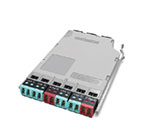 Configuration A Nonintegrated LC/LC/LC |
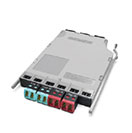 Configuration A Nonintegrated LC/LC/LC- BiDi |
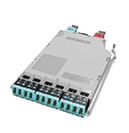 Configuration B Integrated MTP/LC/MTP |
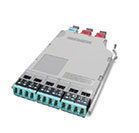 Configuration B Integrated MTP/LC/MTP-BiDi |
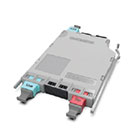 Configuration C Integrated MTP/LC/MTP (Front Tap) |
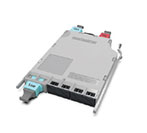 Configuration C Integrated MTP/LC/MTP (Rear Tap) |
|||||
| Maximum TAP Port Density |
Configuration A (2 Dupliex Links) |
Configuration A (BiDi) (1 Duplex Link) |
Configuration B (6 Duplex Links) |
Configuration B (BiDi) (6 Duplex Links) |
Configuration C (Front Tap) (1 MTP Link) |
Configuration C (Rear TAP) (1 MTP Link) |
||||
| EDGE-01U | 16 | 8 | 48 | 48 | 8 | 8 | ||||
| EDGE-0U-SP | 24 | 12 | 72 | 72 | 12 | 12 | ||||
| EDGE-02U | 48 | 24 | 144 | 144 | 24 | 24 | ||||
| EDGE-04U | 96 | 48 | 288 | 288 | 48 | 48 | ||||
| Available Fiber type | OM4 | SM | OM4 | OM4 | SM | OM4 | OM4 | SM | OM4 | SM |
| Split Ratios | 50/50 | 50/50 | 50/50 | 50/50 | 50/50 | 50/50 | 50/50 | 50/50 | 50/50 | 50/50 |
| 70/30 | 70/30 | 70/30 | 70/30 | 70/30 | 70/30 | 70/30 | 70/30 | |||
| 80/20 | 80/20 | 80/20 | 80/20 | 80/20 | 80/20 | 80/20 | 80/20 | |||
| 90/10 | 90/10 | 90/10 | 90/10 | |||||||
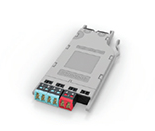 Configuration A Nonintegrated LC/LC/LC |
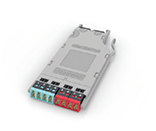 Configuration A Nonintegrated LC/LC/LC (BiDi) |
 Configuration B Integrated MTP/LC/MTP |
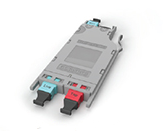 Configuration B Integrated MTP/LC/MTP - BiDi |
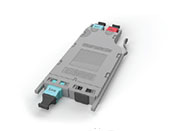 Configuration C (Integrated MTP/MTP/MTP (front tap) |
|||||
| Maximum TAP Port Density |
Configuration A (1 Duplex Link) |
Configuration A (BiDi) (1 Duplex Link) |
Configuration B (6 Duplex Links) |
Configuration C (Front TAP) (1 MTP Link) |
Configuration C (Rear TAP) (1 MTP Link) |
||||
| EDGE8-01U | 12 | 12 | 48 | 12 | 12 | ||||
| EDGE8-01U-SP | 18 | 18 | 72 | 18 | 18 | ||||
| EDGE8-02U | 36 | 36 | 144 | 36 | 36 | ||||
| EDGE8-04U | 72 | 72 | 288 | 72 | 72 | ||||
| Available Fiber Type | OM4 | SM | OM4 | OM4 | SM | OM4 | SM | OM4 | SM |
| Split Ratios | 50/50 | 50/50 | 50/50 | 50/50 | 50/50 | 50/50 | 50/50 | 50/50 | 50/50 |
| 70/30 | 70/30 | 70/30 | 70/30 | 70/30 | 70/30 | 70/30 | 70/30 | ||
| 80/20 | 80/20 | 80/20 | 80/20 | 80/20 | 80/20 | 80/20 | 80/20 | ||
| 90/10 | 90/10 | 90/10 | 90/10 | ||||||
| Benefits of Passive Optical Tapping vs. Spanning | ||
| Benefit | TAP | SPAN |
| Passive | TAPs are passive devices and don't require power or configuration. | SPAN ports can cause network issues like bridging loops if spanning tree is not disabled on a SPAN port. Canoccur during network refresh when SPAN ports are deployed as network ports. |
| All Access | They make copies of all data in real-time with no traffic delay without burdening the live network | SPAN ports do not receive all data: for example, corrupt and improperly sized packetrs may not be received, in addition, SPAN data has the lowest priority |
| Low-Cost | TAPs are low-cost and a highly reliable way to provide data nonintrusively to network tools fo rmultiple generations of optics. | The cost of transceivers used for SPAN ports increases with every generation of optic, causing your monitoring cost to increase |
| Density | Since they are part of the structured cabling, TAPs allow you to retain use of ports on network swithes. | SPAN reuires two ports on network switch when monitoring full-duplex communication between two devices (ingresss and egress). |
| Security & Reliability | TAPS are completely secure because they are not part of the network (can't be hacked). | SPAN changes the timing (delays) of the frame/packet interaction and places an extra burden on the production network (replication of traffic). |